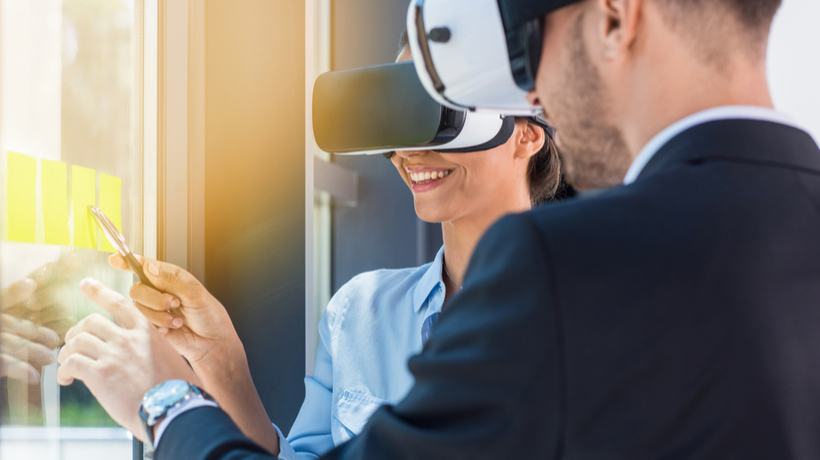How 3D Virtual Reality Games Build Real World Skills
As a serious games and simulations developer and advocate, one of the common questions that I have come across is "Do the skills you learn in a simulated environment hold up in the real world?".
The primary rationale for using game-based or simulated learning is that they are practice-oriented and that the emphasis is on skills. While it is not disputed that games require some sort of skills, the concern for the relevance of such skills in actual on-the-job situations is real and understandable.
As with any computer-generated environment or system, computer games and simulation have varied user-interfaceS and provide varied user experiences. Any potential users must learn to interact with such interfaces and gain skills—depending on the system, examples are hand-eye coordination, spatial intelligence, pattern recognition, causality, etc.—and improve them over time.
So, the question is not about the learning of skills in games. The question is; Can someone who has practiced a skill in a game or simulation also be effective at performing similar tasks in real life?
The answer is "yes". Various studies, such as these ones on nurses training using games, have shown the improvement in performance confidence and knowledge of real world procedures through the use of simulated and game-based practice.
In this article, we will explore 4 ways in which games and simulations can be used to build real world skills.
1. They Engage Multiple Senses
Today, computer games and simulations are modeled blends of reality and fantasy that engage multiple senses. From vivid and detailed visuals, characters, and locations that can be entirely life like to mesmerizing auricular presentations that seem much larger than life.
At a less obvious level, even without added peripherals, computer games play with your senses of time, agency, and familiarity. With the new toys that enable play in Augmented, Virtual, and mixed realities, games also frequently engage our vestibular and kinaesthetic faculties.
For even more demanding experiences, especially for training critical, life-preserving, or fine motor skills, custom-made haptic interfaces can be created.
2. They Build Skills That Support Situational Intelligence
Take a moment to examine this screenshot below. It's from a nurses training game titled Quality Detective:
Even with very little context, based purely on what you can see and the knowledge you have gained from prior experiences, the virtual representation of a hospital ward should be apparent.
Prompted by the name 'Quality Detective' or perhaps your inner eye-for-detail, the grey gloves on the floor may seem noticeably (and perhaps even irritatingly) out of place.
If you are a trained nurse, another detail, of something out of place, will be equally and glaringly obvious. Before reading on, look at the image again to see if you can spot the problem with the setup shown (something a trained nurse should easily be able to spot).
There is what seems to be an oxygen cylinder (tell-tale shape and color) left unattended and precariously on the floor next to the wheels of the bed. From the perspective of normal operational safety guidelines, this seems like gross negligence on someone's part.
What your mind just did, in the context of skill-building, is an exercise of situational awareness. In the safe and simulated environments of games, in a relatively short span of time, a player/learner can be made to practice with many such exercises repeatedly.
3. They Help Precipitate And Inform Your Mental Models Of Dynamic Systems
Unlike videos and a lot of other forms of media, games are usually non-linear narratives. The player’s perspective of a situation doesn't need to be rigid or deterministic. In a game, the player is more than a mere observer. The player has agency.
The player is able to observe situations in a game at varied lengths of time, from multiple perspectives, over multiple attempts, and with multiple possible outcomes. This means that the mental models that players have to make, of situations in games, need to be emergent and dynamic.
This is mentally stimulating and also emulates real life experience in a much safer environment. Research has shown that experiences of situations gleaned from simulated practice transfer well to real life performance of the simulated task.
4. They Allow You To Evaluate Actions And Consequences
One of the most important and compelling features of games as simulated practice is the ability to perform realistic tasks with realistic goals and towards realistic outcomes. All without taking any real risks in terms of materials, safety, or repercussions.
This means that the player may attempt the simulated tasks repeatedly and can try multiple approaches (either specific actions or over-arching strategies) to achieve the desired outcomes.
Furthermore, well-designed games may present various magnitudes of subtle, discreet, and unexpected variations of the situations to the player. This form of training has been shown to help people master skills faster than simply repeating the tasks in precisely the same way.
Conclusion
In recent years, video games have quickly become the largest entertainment medium of our times and enjoy a wide and diverse audience. With the increase of processing power and the proliferation of newer technologies such as Augmented and Virtual Reality, the fidelity, variety, and popularity of games as a medium will only increase.
This coupled with the growing trend towards practice and skills-oriented eLearning means that more and more organizations will adopt some form of Augmented or Virtual reality simulation-based training.
With the right kind of design, using games-for-learning can play a pivotal role in a wide range of skills training and building initiatives across all sectors and industries.











